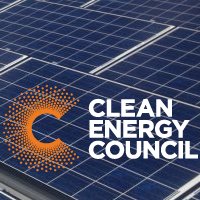The Clean Energy Council yesterday called on the Federal Government and Opposition to accept a proposed compromise target for large-scale renewable energy in Australia of 33,500 gigawatt-hours (GWh) by 2020.
The CEC had been aiming for a higher target; but says it wishes to end the 12 months of political deadlock as it was now critical the issue was resolved.
The 33,500 gigawatt-hours figure represents the mid-point between the original position of the government (26,000 GWh) and the opposition (41,000 GWh as legislated). It comes after the Government’s recent so-called “final offfer” that would have cut the Large Scale Renewable Energy Target ( LRET) to 32,000 gigawatt hours (GWh)
“While this compromise represents more than a 30 per cent cut to the amount of new renewable energy required, accepting this package can quickly unlock over $10 billion of new investment, protect the 21,000 jobs in the sector and create more than 6000 new jobs around the country from large-scale renewable projects,” said Clean Energy Council Chief Executive Kane Thornton
“We are calling on both major parties to show leadership and to compromise, providing a future for the renewable energy industry in Australia and unlock the massive economic potential of the sector.”
The CEC is also calling on the parties to lock in support for leaving the Small-scale Renewable Energy Scheme (SRES) unaltered, removing legislated requirement for a review of the policy every two years and more controversially, providing full exemption for Emissions-Intensive Trade Exposed (EITE) industries.
The industry body is also calling for the preservation of the Australian Renewable Energy Agency (ARENA) and Clean Energy Finance Corporation (CEFC); both of which it says play an important role in supporting development of a diverse set of renewable energy technologies for the future
As a result of drawn-out wrangling over the RET, investment in Australian large scale projects was down 88 per cent last year to just $240 million – the lowest levels in over a decade. In 2013, Australia was ranked in the top four most attractive places to invest in renewable energy in the world. Currently it is ranked 10th according Ernst & Young’s global Renewable Energy Country Attractiveness Indices.
“The clean energy sector calls on both major parties to support this proposal, to end the crisis and unlock the future of renewable energy in Australia,” says Mr Thornton.
The Clean Energy Council’s full proposal can be viewed here.













































